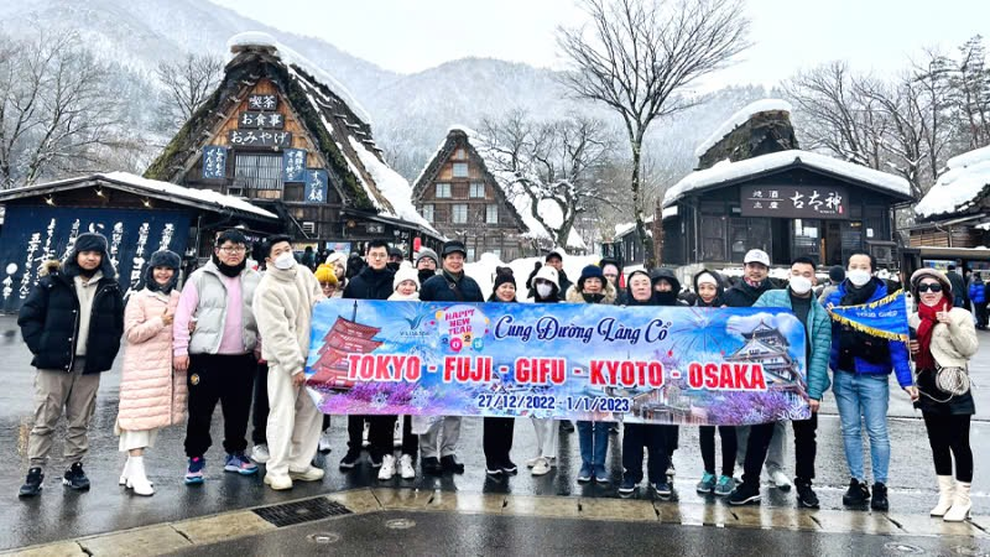The tenth meeting of the Vietnam-Japan Tourism Cooperation Committee marked a decade of growing collaboration between the two nations, highlighting significant achievements and outlining future strategies for bolstering tourism exchange. The meeting, held recently, saw representatives from both countries reaffirm their commitment to strengthening tourism partnerships and fostering closer bilateral ties.
A Decade of Growing Collaboration

The meeting, a testament to 10 years of continuous cooperation since its inception in 2005, underscored the remarkable growth in tourism exchange between Vietnam and Japan. Nakano Takeshi, Deputy Director-General of the Japan Tourism Agency (JTA), expressed gratitude for Vietnam’s collaboration, particularly during the World Expo Osaka-Kansai in April. He emphasized the meeting’s crucial role in further strengthening tourism cooperation and consolidating the friendly relationship between the two nations.
“The tenth meeting of the Vietnam-Japan Tourism Cooperation Committee marks a significant milestone,” Takeshi stated. “The continuous efforts of both sides have resulted in remarkable growth in tourism exchange, and we look forward to building on this success.” He specifically acknowledged Vietnam’s contributions to the success of the World Expo.
Remarkable Growth in Tourist Numbers

The meeting revealed strong positive trends in tourist exchange. Hà Văn Siêu, Deputy Director-General of the Vietnam National Administration of Tourism (VNAT), reported substantial increases in tourist arrivals. In 2024, over 711,000 Japanese tourists visited Vietnam, a 21% increase compared to 2023, and a recovery of 75% compared to pre-pandemic levels in 2019. This positive trend continued into 2025, with nearly 280,000 Japanese tourists visiting Vietnam in the first four months, a 19% increase year-on-year.
Conversely, the number of Vietnamese tourists visiting Japan has not only recovered but surpassed pre-pandemic levels. In 2024, over 621,000 Vietnamese tourists visited Japan, with continued growth observed in the first quarter of 2025.
“The significant increase in tourist numbers between Vietnam and Japan underscores the success of our collaborative efforts,” Siêu commented. “This is a testament to our commitment to fostering closer ties between our two nations.” He attributed this success, in part, to effective air connectivity, with numerous new flight routes, including chartered flights, launched recently by several Japanese prefectures.
Boosting Promotional Activities and Collaboration

Beyond the increase in tourist numbers, both countries have actively supported each other in tourism promotion. Japan has consistently participated in major Vietnamese international tourism fairs, including VITM in Hanoi and ITE-HCMC in Ho Chi Minh City, leveraging the Japan National Tourism Organization (JNTO) office for promotional activities.
Vietnam, in turn, maintains an ongoing commitment to promoting Vietnamese tourism in Japan, with annual Vietnam Culture and Tourism Weeks. Notably, in 2025, Vietnam established a dedicated exhibition at EXPO 2025 Osaka, themed “Empowering Lives.”
Multilateral Cooperation and Capacity Building
Vietnam’s National Administration of Tourism also collaborates effectively with Japanese partners, most significantly the ASEAN-Japan Centre (AJC) and the UN World Tourism Organization’s Regional Support Office for Asia and the Pacific (RSOAP) in Nara. These partnerships support various technical assistance programmes, training initiatives, and capacity building for tourism businesses and communities.
“Our collaboration extends beyond bilateral efforts,” Siêu explained, highlighting the crucial role of multilateral partnerships in strengthening the tourism sector. “The support from AJC and RSOAP has been invaluable in enhancing the skills and capabilities of our tourism industry.”
Addressing Challenges and Opportunities
Siêu expressed the hope that this meeting would serve as an opportunity for both sides to review past cooperation, analyze existing advantages, challenges, and opportunities, and propose practical solutions to enhance tourist experiences and further promote bilateral tourism cooperation. This aligns with the broader goal of contributing to the comprehensive strategic partnership between Vietnam and Japan.
The meeting involved presentations and discussions with national and local tourism authorities, and businesses from both countries.
Enhancing Tourist Experiences: Policy and Infrastructure
Trần Phong Bình, Deputy Head of the International Relations and Tourism Promotion Department at the VNAT, detailed Vietnam’s initiatives to enhance visitor experiences. He emphasized Vietnam’s visa-free entry for Japanese citizens for up to 45 days and the provision of e-visas for global citizens, permitting stays of up to 90 days.
“We’ve significantly improved accessibility for Japanese tourists,” Bình noted. “The extensive network of direct flights between Vietnam and Japan, coupled with a well-developed transportation system and numerous year-round tourism events, makes Vietnam an increasingly attractive destination.”
He highlighted popular Vietnamese destinations among Japanese and international tourists: Hanoi, Hue, Da Nang, Ho Chi Minh City, Ninh Binh, Hoi An, Phu Quoc, Nha Trang, Quy Nhon, and Ba Ria-Vung Tau.
A representative from Niigata Prefecture emphasized the importance of streamlined visa procedures and affordable costs in enhancing visitor experiences. Effective marketing strategies targeting key potential markets, alongside promoting Vietnam’s rich cultural heritage, were also deemed essential for increasing competitiveness and creating a positive image.
Future Cooperative Strategies: Key Priorities
Siêu outlined key priorities for future cooperation. These include:
- Facilitating travel between the two countries: This includes simplifying visa procedures.
- Strengthening information sharing: This involves sharing information on policies, investment opportunities, and best practices in tourism development to support businesses in both countries.
- Elevating tourism quality: This includes improving infrastructure, facilities, and the capabilities of tour guides.
The VNAT committed to collaborating with the JTA and JNTO in promoting tourism in both countries. Furthermore, VNAT called for continued cooperation with the JTA, AJC, and the UNWTO’s office in Japan for capacity building programs and empowering local communities.
In summary: The tenth meeting of the Vietnam-Japan Tourism Cooperation Committee successfully showcased a decade of significant growth in tourism exchange and reaffirmed the commitment of both nations to further strengthen their partnership, leveraging collaboration to enhance tourist experiences and contribute to their respective economic growth and overall bilateral relations.



